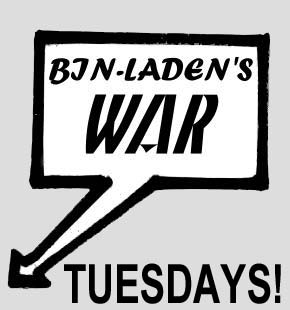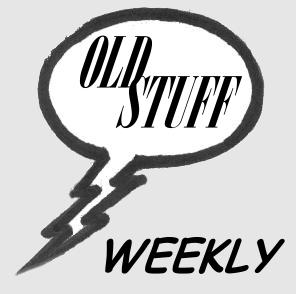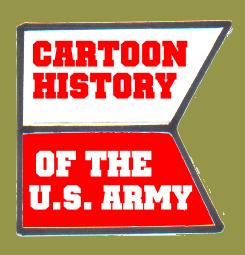
XF-85 GOBLIN
 ______Following World War II the United States Air Force had a strong commitment to strategic bombing, a commitment made even firmer by the U.S. monopoly on nuclear weapons. B-17s and B-24s had dropped millions of tons of explosives on the Nazi war machine and the long-range B-29s had done the same for the militarist state of Japan. The USAF had atomic bombs and had bombers on the drawing board capable of delivering them deep into enemy territory but it did not have a fighter capable of escorting the next-generation bombers all the way to target. A solution had to be found.
______Following World War II the United States Air Force had a strong commitment to strategic bombing, a commitment made even firmer by the U.S. monopoly on nuclear weapons. B-17s and B-24s had dropped millions of tons of explosives on the Nazi war machine and the long-range B-29s had done the same for the militarist state of Japan. The USAF had atomic bombs and had bombers on the drawing board capable of delivering them deep into enemy territory but it did not have a fighter capable of escorting the next-generation bombers all the way to target. A solution had to be found.
______The concept of the parasite fighter was revived. Back when airships proved themselves to be the long-range weapon of choice the British and the Americans experimented with fighters that could be carried and deployed by the giant gasbags (see Militrivia 9) and recovered after it was done with its mission. This concept would be adapted to the jet age.
 ______McDonnell designed the XF-85 Goblin to fit the bill... and the bomb bay of the Air Force's new strategic bombers. As a result of the size limitations presented by the bomb bay the Goblin wasn't a typical, sleek jet fighter. Instead it was a squat, egg-shaped airplane with small wings that only increased it's caricature-like nature.
______McDonnell designed the XF-85 Goblin to fit the bill... and the bomb bay of the Air Force's new strategic bombers. As a result of the size limitations presented by the bomb bay the Goblin wasn't a typical, sleek jet fighter. Instead it was a squat, egg-shaped airplane with small wings that only increased it's caricature-like nature.
______The wings of the Goblin folded upward to save on space and the tail was a partial "V" shape which minimized width. Because the plane was designed to be launched and recovered via a trapeze system the aircraft had NO landing gear of any sort, only a retractable hook that extended from the fuselage, in front of the canopy.
______The concept of a Goblin flight would be simple: the aircraft would be carried in the bomb-bay of a strategic bomber (along with the huge atomic bombs then in use) until an enemy fighter was detected (hopefully by the bomber's radar) and would then be lowered on it's trapeze. It would disengage from the trapeze, fight off the enemy, and then hook back up to the trapeze and be pulled back into the bomber. Some bombers were to carry three fighters and NO bombs, in order to act as a kind of escort carrier. Since the Goblin had very limited range and could not get back to friendly airspace on its own the bomber was it's only means to return, giving the fighter pilot an added incentive to defend his mothership.
 ______The test pilots in charge of evaluating the Goblin found that the biggest problem they had lay in the recovery phase. In tests involving a modified B-29 (which was too small to carry Goblins operationally) the airplane ran into great difficulty when it attempted to hook-up to the trapeze. The buffeting around the mothership was too great and only a highly skilled pilot could successfully hook-up; in one test the pilot's canopy was smashed by the trapeze and he was forced to crash-land his Goblin.
______The test pilots in charge of evaluating the Goblin found that the biggest problem they had lay in the recovery phase. In tests involving a modified B-29 (which was too small to carry Goblins operationally) the airplane ran into great difficulty when it attempted to hook-up to the trapeze. The buffeting around the mothership was too great and only a highly skilled pilot could successfully hook-up; in one test the pilot's canopy was smashed by the trapeze and he was forced to crash-land his Goblin.
______The Goblin had a problem other than the recovery issue (which would have been resolved eventually): it was the type of aircraft it was likely to encounter over the USSR, the most likely theater in which it would be used. One can only shudder when they consider the chances of a F-85, equipped with four puny .50 machineguns, against a MiG-15.
______In October 1949 the project was cancelled and the two prototypes produced eventually found their way to museums. The problem presented by the need for fighters that could "go all the way" was eventually resolved by increased range and in-flight refueling.
WHO WAS AMERICA'S ONLY "HONORARY VETERAN"?







 ______Following World War II the United States Air Force had a strong commitment to strategic bombing, a commitment made even firmer by the U.S. monopoly on nuclear weapons. B-17s and B-24s had dropped millions of tons of explosives on the Nazi war machine and the long-range B-29s had done the same for the militarist state of Japan. The USAF had atomic bombs and had bombers on the drawing board capable of delivering them deep into enemy territory but it did not have a fighter capable of escorting the next-generation bombers all the way to target. A solution had to be found.
______Following World War II the United States Air Force had a strong commitment to strategic bombing, a commitment made even firmer by the U.S. monopoly on nuclear weapons. B-17s and B-24s had dropped millions of tons of explosives on the Nazi war machine and the long-range B-29s had done the same for the militarist state of Japan. The USAF had atomic bombs and had bombers on the drawing board capable of delivering them deep into enemy territory but it did not have a fighter capable of escorting the next-generation bombers all the way to target. A solution had to be found. ______McDonnell designed the XF-85 Goblin to fit the bill... and the bomb bay of the Air Force's new strategic bombers. As a result of the size limitations presented by the bomb bay the Goblin wasn't a typical, sleek jet fighter. Instead it was a squat, egg-shaped airplane with small wings that only increased it's caricature-like nature.
______McDonnell designed the XF-85 Goblin to fit the bill... and the bomb bay of the Air Force's new strategic bombers. As a result of the size limitations presented by the bomb bay the Goblin wasn't a typical, sleek jet fighter. Instead it was a squat, egg-shaped airplane with small wings that only increased it's caricature-like nature. ______The test pilots in charge of evaluating the Goblin found that the biggest problem they had lay in the recovery phase. In tests involving a modified B-29 (which was too small to carry Goblins operationally) the airplane ran into great difficulty when it attempted to hook-up to the trapeze. The buffeting around the mothership was too great and only a highly skilled pilot could successfully hook-up; in one test the pilot's canopy was smashed by the trapeze and he was forced to crash-land his Goblin.
______The test pilots in charge of evaluating the Goblin found that the biggest problem they had lay in the recovery phase. In tests involving a modified B-29 (which was too small to carry Goblins operationally) the airplane ran into great difficulty when it attempted to hook-up to the trapeze. The buffeting around the mothership was too great and only a highly skilled pilot could successfully hook-up; in one test the pilot's canopy was smashed by the trapeze and he was forced to crash-land his Goblin.